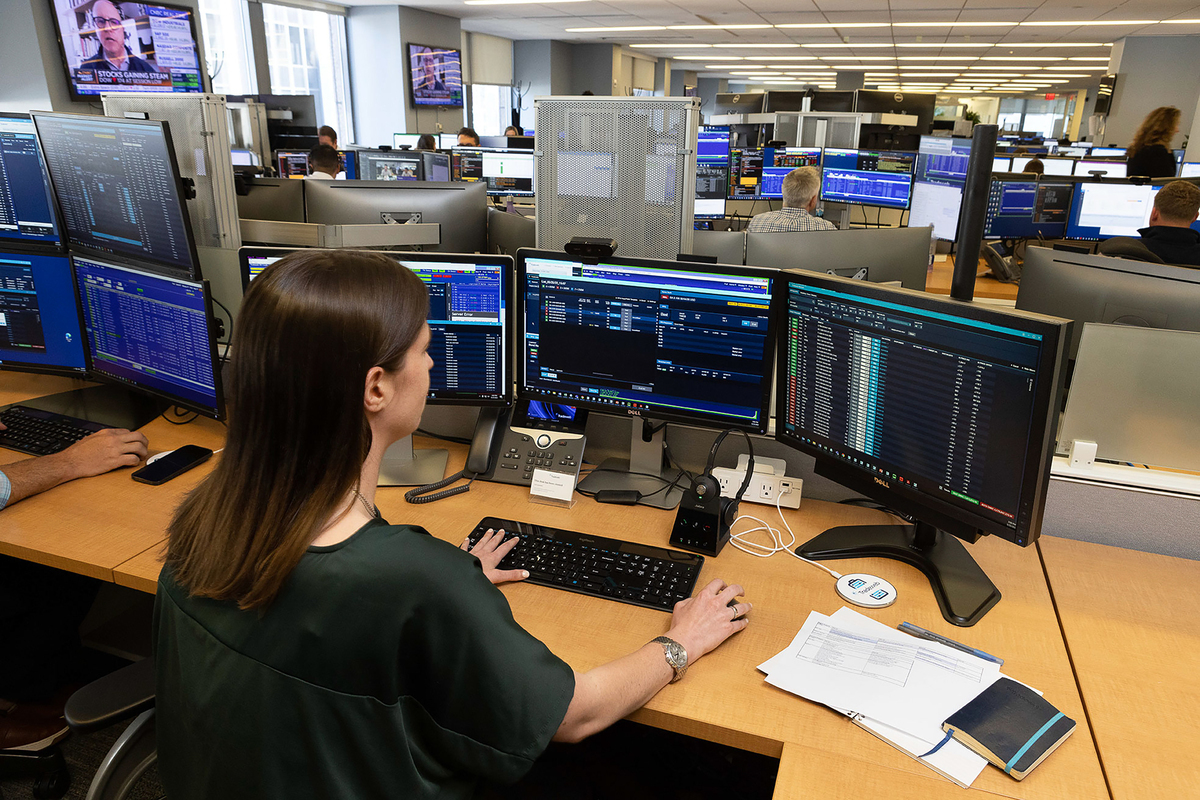Beating money laundering through data connections

Michael Down at Neo4j explores the advancements in AI and graph databases and their critical role in combating modern money laundering tactics.
The recent hit Netflix series The Gentlemen shines an interesting light on the murky (yet sophisticated) underworld of organised crime. Adorned with the usual Guy Ritchie cocktail of gangs, drugs, guns and hard cash, it got me thinking about one of the show’s core themes – money laundering – and how the schemes used in the show would hold up in the real world.
Here’s a quick summary for those who haven’t watched the show (spoiler alert). Following the death of his aristocratic father, the new Duke of Halstead, Eddie Horniman, discovers a hidden cannabis farm beneath his family estate - the criminal syndicate running it were paying his father millions in hard cash for the rent (maintaining vast country piles is an expensive business, it transpires).
Understandably unnerved by this discovery, the show follows Eddie’s efforts to try and navigate as quick an exit as possible whilst still making sure he gets his cut. Needless to say, he soon discovers that laundering millions in dirty banknotes (and exiting a well-established criminal empire) isn’t as straightforward as he’d hoped.
Money laundering– and why it’s hard to bust
Whilst The Gentlemen is a fictional romp with a healthy garnish of cockney accents, money laundering is a very real problem. According to the United Nations Office on Drugs and Crime, between 2 and 5% of global GDP is laundered each year, and in the UK specifically, over a quarter (27.5%) of all crimes and issues are related to money laundering.
Catching money launderers is a huge and growing challenge. Like in The Gentlemen, criminal activities are often hidden in plain sight, masquerading as legitimate and mundane. Like Eddie trying to save his estate, financial criminals have a lot to play for and are getting better at creating an intricate network of identities and accounts to obscure their activities.
Busting money laundering rings is all about finding connections, and modern technologies are helping to piece these connections together – although some technologies are better than others. Conventional anti-money laundering (AML) measures typically look to identify deviations from standard patterns within discrete data and transactions.
At a technical level, they are based on a relational database model where data is stored in predefined tables and columns. The issue is, if someone has always laundered money, their behaviour stays unchanged, so quite often nothing looks untoward.
This approach is ideal for many business applications, but slows to a crawl when applied to the large data sets that piles of financial records would provide, and struggles to effectively pick up the patterns in the data that would identify money laundering networks. While current AML systems try to analyse networked data (i.e. fragmented data spread across the internet or a dedicated network), they can’t scale up efficiently due to the sheer volume, depth and complexity of it.
This leads to extensive time being spent investigating and resolving simple, let alone complex, alerts. Focusing on discrete data alone (so numbers that represent exact values, such as individual transactions without context) also tends to generate many false positives, leading to fruitless investigations.
Undoubtedly, it would be difficult to make the connection between Eddie and Susie Glass’s money launderers, Chucky Kubra and Henry Collins, in the show, given their mixed backgrounds and varying business interests. Although fans of the Netflix series may root for Eddie, real-life scenarios demand effective measures to catch such activities.
AI and graph databases to beat the launderers
Where the aforementioned relational database AML solutions fall is their inability to apply broader contextual insight. What is needed is the ability to follow a trail from one account to another – from the Halstead Estate through to Chucky Kubra. A 360-degree view of complex money laundering networks is necessary to flag connections between assets and individuals - and is something that knowledge graphs are able to provide.
Banks often have huge blind spots regarding transactional fraud. For instance, if bank A holds the account for the Halstead Estate, and Chucky Cubra banks with bank B, the money laundering scheme wouldn’t send money directly from A to B. Instead, they will use a network of mule accounts across different banks to hide the fraudulent movements and target destination, making it difficult for any single bank to uncover the entire network.
This is where a knowledge graph’s ability to combine structured and semi-structured data together, such as a transaction, sanctions list from countries worldwide and crime reports, can be useful. By cross-referencing all the information, (say, Chucky’s previous tax evasion charges, and the Halstead Estate’s bad credit) banks can create a richer context. They can compare a single entity, such as a business or a person, against others similar to them to identify potential deviations from the norm.
This allows them to assess the risks associated with a particular transaction, and eventually build up the money laundering network. It’s a big reason why some of the world’s leading banks have turned to graph database technology and artificial intelligence (AI) to tackle the money laundering issue – which would undoubtedly cause a headache for Eddie and the cronies he’s forced to keep company with.
Graph database technology, in particular, is well-suited for AML work, as any number of qualitative or quantitative properties can be assigned to data, describing complex patterns coherently and descriptively.
Graph databases use individual data such as ‘person’, ‘account’, ‘company’ and ‘address,’ along with their connections to one another, like ‘registered at’ or ‘transacted with,’ to uncover complex connections. Specifically, looking for key individual data and connections in this way means financial institutions can uncover intricate networks quickly, flagging suspicious connections that would otherwise remain hidden.
Teams looking to bust money laundering rings benefit from a detailed picture of assets and the connections between people. With graph databases, financial institutions are able to expose patterns very quickly and gain real-time insight into their assets and relationships.
In the real world, if a bank or the police were to apply this technology to the web of gangs and transactions featured in The Gentlemen, the connections could be quickly mapped and analysed, creating a compelling trail of evidence that would stop Eddie’s “bread & honey” laundering in its murky tracks.
Modern technologies busting age-old crimes
Graph database software and AI technology are moving AML investigations to another level. Real-time analysis that uncovers data patterns is the only way to keep one step ahead of the criminal networks and their dirty money. Armed with graph database software and AI, the banking and finance sector is taking on the money launderers and winning.
Just as Eddie’s schemes in The Gentlemen could be unravelled by mapping out their connections and transactions through these technologies, financial institutions can leverage them to detect and prevent money laundering activities before they take root.
So, while the show paints money laundering as relatively straightforward and low risk, the new technologies at play today would make Eddie’s ambitions of a swift exit much more difficult.
Michael Down is Head of Financial Services Technology at Neo4j
Main image courtesy of iStockPhoto.com and nickfree

Business Reporter Team
Most Viewed
Winston House, 3rd Floor, Units 306-309, 2-4 Dollis Park, London, N3 1HF
23-29 Hendon Lane, London, N3 1RT
020 8349 4363
© 2025, Lyonsdown Limited. Business Reporter® is a registered trademark of Lyonsdown Ltd. VAT registration number: 830519543





